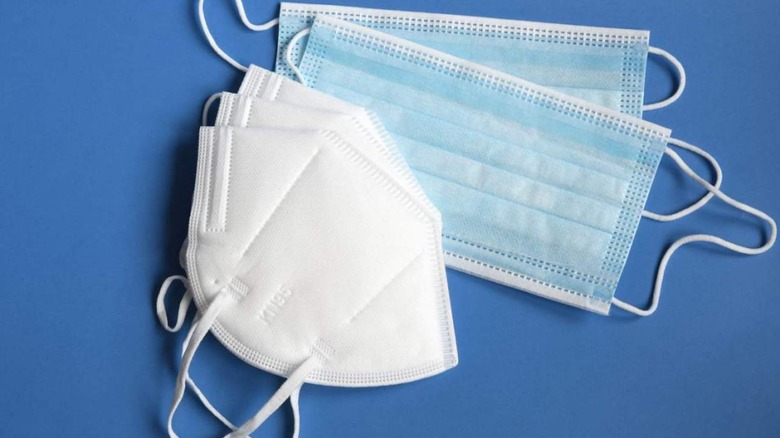Researchers say some face mask 'hacks' work, but there's a downside
Faces come in many shapes and sizes, unlike most face masks. As a result, many people struggle to find a mask that fits properly, particularly when using the highest quality options available: N95/KN95 and surgical masks. This issue has led to what researchers are calling face mask "hacks" — essentially workarounds to get a mask to fit properly. While these hacks may be effective, the experts say there's also a big downside.
A face mask hack may involve, for example, knotting the elastic ear bands to reduce their length, causing the mask to fit more tightly on the wearer's face. Other examples of these "hacks" include taping the edges of a mask to one's face to seal the gaps, stuffing gauze around the nose to prevent air from escaping, and using rubber bands to keep the mask tight.
University of Cambridge researchers recently tested seven of these hacks using KN95 and surgical face masks. The results, which have been published in the journal PLoS One, reveal two particular hacks that "significantly" improved mask fit, but with an unfortunate consequence.
Face mask hacks that work
According to the researchers, ensuring your face mask fits properly is more important than the materials used. Loose masks allow air to enter and escape through the gaps between the fabric and the wearer's face, making them far less effective at filtering droplets that may contain the virus.
Getting a proper fit may be particularly difficult if someone only has access to masks that are too large, and that's where the hacks come in. The study's first author Eugenia O'Kelly explained:
We've seen lots of anecdotal evidence of people hacking their masks to better fit the shape of their face, but we wanted to validate whether any of these hacks actually work, as very little research has been done in this area.
The researchers measured the number of particles in and around face masks as part of their tests, also utilizing a flavored spray to determine whether the participants were able to taste the particles while wearing different masks. By doing this, the team zeroed in on two particular hacks that greatly improved mask fit.
The first hack involves using tape to attach the mask's edges to the wearer's face. While effective, particularly with surgical masks, the downside was the discomfort involved in removing the tape later on. Alternatively, the study also found that using tights (a type of elasticized material) to press the mask into the wearer's face effectively improved fit, but was "highly uncomfortable."
Though many of the hacks were reported to be uncomfortable, the researchers say it may still be worth using them while in a high-risk environment. "The discomfort is worth it for the added protection," O'Kelly noted.

